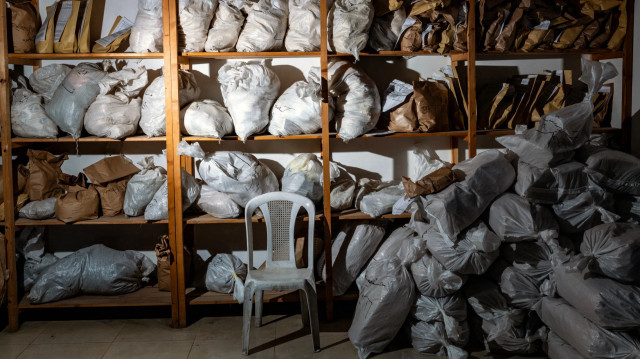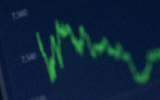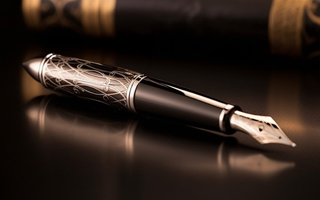
The toppling of Syrian leader Bashar al-Assad's regime in December 2024 led to the uncovering of the massive industrial scale of Captagon manufacturing facilities
The toppling of Syria's Bashar al-Assad regime in December 2024 led to the uncovering of the massive industrial scale of Captagon manufacturing facilities in the regime's security headquarters, palaces and even residences of its powerful people.
Before rebel groups uncovered and destroyed the Assad regime's empire of Captagon, Western intelligence agencies, counter-drug authorities, journalists and observers had long believed that Captagon was being produced, smuggled and shipped by the Daesh/ISIS terror group with the aim of financing their activities.
In one example, Italian authorities seized in July 2020 more than 84 million Captagon tablets weighing 14 tons and with an estimated value of more than €1 billion. The tablets were hidden in large paper and steel cylinders and transported to the port of Salerno in southern Italy, where they were seized by the police. At the time, Italian authorities falsely attributed the shipment to Daesh/ISIS, although one could easily identify it as a shipment related to Iran or the Assad regime.
The conclusion reached by Italian investigators suggests that they either lacked accurate information, were misled, or were influenced by ideological motives to associate the shipment with Daesh/ISIS. However, for those familiar with the Middle East, it is clear that narcotics trade of this scale could not exist without the involvement of Iran, Hezbollah and the Assad regime.
- Hezbollah and the birth of the Captagon trade
Considering the aforementioned shipment, the fact that it originated from Syria, specifically the port of Latakia, indicates that it could not have been a Daesh/ISIS operation -- unless Daesh/ISIS is part of an Iranian criminal network. Latakia is a stronghold of the Alawite minority, where the Assad regime maintained significant influence and control. Moreover, Latakia port was under the control of Iran's Islamic Revolutionary Guard Corps (IRGC) at the time, making it impossible for anyone other than Iran, Hezbollah and the Assad regime to produce and ship such a large quantity.
Long before the Captagon industry moved to Syria under Assad regime controlled areas following the 2011 Syrian uprising, this industry was very well established in Lebanon. Captagon production and trade in Lebanon was largely done by Hezbollah, Shiite drug lords and tribes under their protection. For example, Hashem al-Musawi, the brother of prominent Hezbollah leader and Member of Parliament Nawwaf Al-Musawi, has been influential in the financing, production and exporting of Captagon from Lebanon. This information was publicly known at least since 2012. Iran played a central role in this scheme, where in most cases, the machines used to massively produce the Captagon and the related drugs were imported from Iran and the initial money needed to finance this trade came from the Iranian regime.
Hezbollah used Captagon to increase and diversify its financial sources, especially after the 2006 Israeli war on Lebanon.
During the Syrian uprising, both Hezbollah and the Assad regime resorted to Captagon trade, which grew on an industrial level, transforming the Assad regime into a narcotics empire. This trend intensified during the Trump era, where Donald Trump's sanctions and financial constraints on Iran and Hezbollah were most effective. As a result, Hezbollah transferred its expertise and drug industry to Syria with the help of criminal and narcotics rings.
One of the most infamous Lebanese drug lords from the Beqaa Valley, Nouh Zaiter, was often seen in Syria, especially from 2018 and onwards, where he projected an image of alliance with Hezbollah and the Assad regime. Afterwards Hezbollah's experience in financing, production and smuggling-exporting of Captagon was transferred to the Assad regime.
- Economic impact and the Assad family's profits
According to British government estimates, Assad was responsible for 80% of global Captagon production. The annual global trade in Captagon had an estimated value of $10 billion, with the toppled Assad family's annual profit reaching around $2.4 billion. It is not a coincidence that Major General Maher al-Assad, the brother of toppled leader Bashar and the commander of the Syrian Army's elite 4th Armored Division, was responsible for most of the production and exports of Captagon trade. Maher is known for being very close to Iran and Hezbollah.
Captagon was mostly exported by sea via the IRGC-controlled Latakia port and through land borders with Jordan to two primary destinations: Europe and the Arab Gulf countries. Many of the Assad family members, close officials and businessmen related to him operated many types of factories including ones set up in villas and houses as the Captagon became the regime's “white gold.”
The Assad regime not only leveraged its narcotics empire to secure additional funding but also used it as a political tool. It served as blackmail, persuading regional and international countries that recognizing the regime, normalizing relations and engaging in close security cooperation would help curb this illicit industry -- an industry Assad claimed he was not responsible for.
Although many countries eventually realized that Assad was involved in this trade, they were largely unaware of the extent of his role. The Syrian rebels who toppled the Assad regime and became the de facto rulers of Syria uncovered the clandestine scale of the Captagon industry linked to the Iran-led narcotics axis. Ironically, Iranian officials continue to claim that they support Assad and Hezbollah as part of the "axis of resistance," until it becomes clear that it was anything but resistance. In fact, it turned out that the Iranian-led resistance axis is nothing but a drug line.
*Opinions expressed in this article are the author's own and do not necessarily reflect Anadolu's editorial policy.
Hello, the comments you share on our site are a valuable resource for other users. Please respect other users and different opinions. Do not use rude, offensive, derogatory, or discriminatory language.
The floor is all yours.








